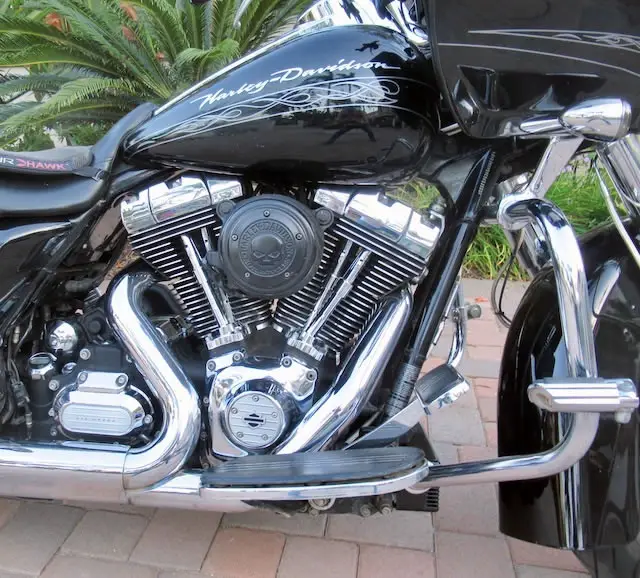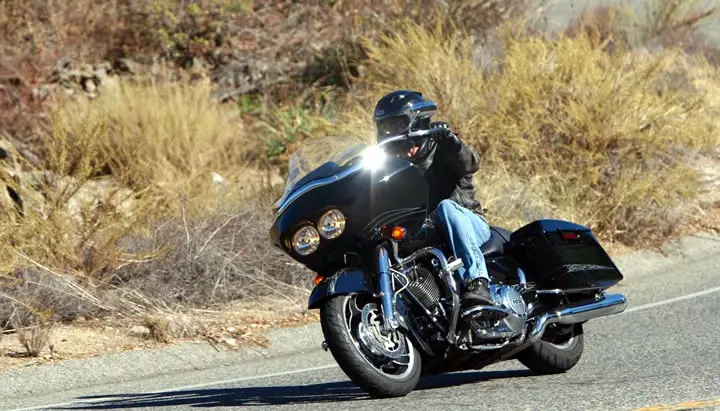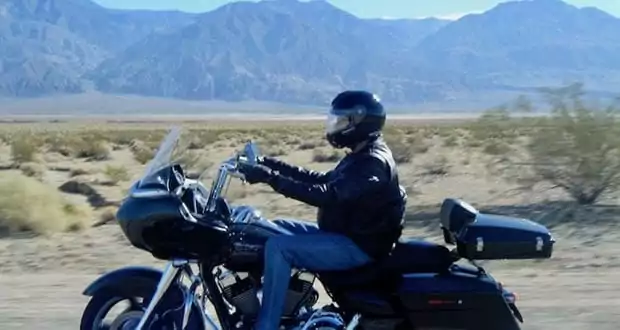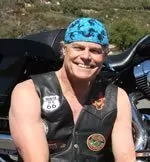There have been a few complaints on YouMotorcycle about the rising prices of new Harley-Davidsons. There have also been comments from people hanging onto older Harley models because they like the old style more. To address these complaints and comments, there are many manufacturers of parts (including the Motor Company itself) that allow one to rebuild an old Harley engine giving it a splash from the fountain of youth, but also a shot of steroidal performance. There is obviously some cost associated with a twin cam engine rebuild, but it is a fraction of the cost of purchasing a new bike.
My 2012 Road Glide before the rebuild
My 2012 Road Glide had rolled past a pile of mile markers and by its 7th birthday, it had collected 91,000 miles on its odometer. Most of those miles were easy, long distance miles. Still, 91K is a big number and I had begun to worry about an engine failure in the middle of nowhere during one of my long distance voyages. I did not enjoy the mental picture of me staring at my bike parked at the side of an empty road surrounded by the permanent quiet of a fried engine, a big thunder storm approaching, and my credit card banging up against its limit. Paralleling my aging body, the engine wear from 91,000 miles had also pulled a little of the original snap from the throttle of the 103 ci engine.
Rebuilt motor or buy a new Harley-Davidson?
While I don’t get too emotionally attached to mechanical equipment, I have done quite a bit to make this bike more comfortable, more visible and certainly a little more stylish. On top of the tall cost of a new motorcycle, I would have to spend an additional $4,000 to bring a new bike up to the standards of my old bike. Deducting a $5,000 trade value for my high mileage old bike, I was still staring down a whopping $29,000 for a new Road Glide out the door. After test riding a new Road Glide and an Indian Chieftan, both extremely nice bikes, comfortable and powerful, I made the decision to rebuild the engine on my existing bike. After some preliminary research, I established a budget of $8,000 for the rebuild, including a new battery, oil cooler, tires and transmission main bearing. That is still a pile of Benjamins, but it was barely over one quarter of the cost of a new bike.
Getting started on the twin-cam engine rebuild
I talked with a couple shops about my twin cam engine rebuild project and discovered that I knew embarrassingly little about the breadth of options for rebuilding a Harley V-twin. To begin with, all sizes of the Twin-Cam engine, 88, 96 and 103 ci can be rebuilt to 103 and even up to 107ci. Those engines can even be upsized to 110, 117 or even 124 ci. Unfortunately those larger displacements would have me more often staring at a rapidly spinning gas pump dial and a depleted bill fold than expansive road vistas. The shop I chose for the rebuild told me that they could add some major cajones to my 103, especially with the dyno tuning they would do after I broke in the rebuilt engine. I decided to rebuild my motor to the same displacement, which also saved me the cost of new cylinders. The shop bored out my existing cylinders by 5/1000ths of an inch to true their shape and installed new “5-over” pistons.
Do we keep or kick the cat?
One rebuild shop I considered said that of course they would remove the catalytic converter for a more through-flowing and louder exhaust. Another said that they recommended leaving the cat in because the motor was built to run with it in place. Of course pulling the cat is illegal in many states including mine, California. As a bit of an eco nut, I liked the idea of leaving the cat in anyway since it has a very distinct purpose that benefits the planet. And with the 24/7 high-volume single-tone tinnitus concert in my ears, I was not really searching for any louder exhaust note.
Performance, efficiency, and cooling
Everyone suggested replacing my old chain-driven cams with more aggressive, gear-driven cams to increase performance and reliability. The more aggressive the cam, the higher the performance. The offset is increased fuel consumption, a concern for my long distance cruising. So I selected moderately more aggressive cams. Nobody suggested it, but I looked into larger aftermarket oil coolers. I wanted to keep the rebuilt motor running as cool as possible to help it last longer. I found several after-market options for these oil coolers. Some came with thermostat-activated fans to help cool the oil when stuck in traffic on a hot day. I purchase one of those for the rebuild shop to install.
Twin-cam engine rebuild versus replacement motor
I did consider the option of purchasing a stock rebuilt motor from the factory and have the shop install it. That was a higher cost option, but could happen quicker and involve some factory warranty but I knew my existing motor had been run respectfully. I was intrigued with obtaining more power from rebuilding that motor using the shop’s knowledge of higher performance parts and dyno tuning.
Doing the rebuild
Beyond the basics, there were so many twin cam rebuild options like flywheel, lifters, connecting rods, pumps, machined heads, etc.. They fell into one of the canyon-sized gaps in my knowledge. I needed to develop some confidence in the shop I was going to use for the project, tell them basically what I wanted to achieve out of the rebuild, and trust in their professional ability and experience to make it happen. After hearing a lot of well-answered questions, I selected a shop, Cycle Visions in San Diego. I got a rough quote, subject to some variation depending on what they found when they tore down my motor, and I told them to go for it.

Looks the same on the outside, but it’s volcanic on the inside.
After the twin cam engine rebuild
Six weeks later I was breaking in the rebuilt engine for 500 miles while holding the rpm below 3000 and marveling at how strong the new engine was running and how much less mechanical noise it was making. The only problem I had was that even with the modestly aggressive new cams and leaving the catalytic converter in, the boom from my existing after-market mufflers had my ears transmitting foul words instead of sound wave vibrations to my brain. I asked Cycle Visions what they would recommend for new quieter mufflers. They laughed and told me that most Harley riders come into their shop to make their exhaust louder and they generally replace quieter mufflers for louder ones. As a result, they had some used, quieter, but high performance Screamin’ Eagle mufflers that another rider had exchanged for new, noisier ones. They switched them out with mine for a modest price during my break-in period. My ears profusely thanked me for the change, but it surprised me that I could feel no reduction in the bike performance.
After the break-in period with my new engine, my new quieter pipes and a new air filter, they put the machine on the dynamometer. I watched as they artfully tuned the engine to an impressive 90 HP at the rear wheel at 4800 rpm and 108 ft-lbs of torque at 3800 rpm. Pretty damn good for a Stage I 103 and better than a stock Milwaukee 8 107 engine. And thanks to that artful tuning, I paid only a small fuel efficiency price for all this new power as my mileage has dropped from about 41-44 mpg to about 39-42 mpg.
The rebuilt engine shoves my 840 pound Road Glide to a much greater top-end speed. It now has car-passing acceleration that leaves me grinning every time I climb on the throttle. My hope is to get another 50 to 90,000 touring miles out of this motorcycle. Then we’ll see where motorcycle technology and my enjoyment of riding have evolved.
Jefe Smith

 YouMotorcycle Motorcycle Blog – Motorcycle Lifestyle Blog, MotoVlog, Motorcycle Reviews, News, & How-Tos
YouMotorcycle Motorcycle Blog – Motorcycle Lifestyle Blog, MotoVlog, Motorcycle Reviews, News, & How-Tos


Very informative article.
Do you thread harley issues?
I have a 2012 ultra limited with intermittent clatter engine noise. Possibly a loose tappet. Won’t do it stopped at idle.